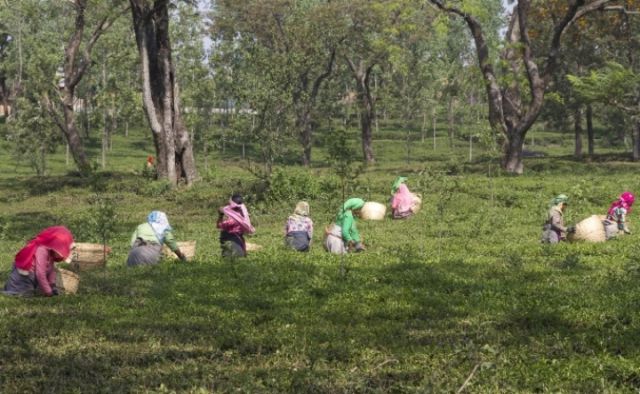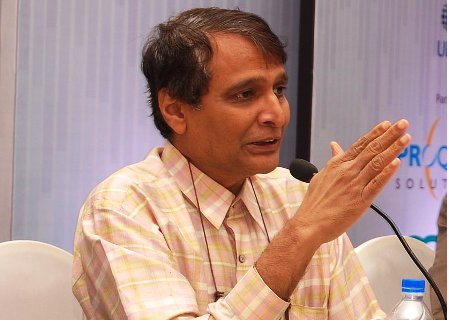
by admin | May 25, 2021 | Business, Commodities, Commodities News, Commodity Market, Corporate, Corporate Governance, Investing, SMEs
 By Bappaditya Chatterjee,
By Bappaditya Chatterjee,
Kolkata : Targetting 300 million kg of exports by 2020, tea planters have told the government that the key to this lies in incentivising production of orthodox (full leaf) tea and boosting the Merchandise Exports from India Scheme (MEIS).
“We are mainly focusing on exports and have given proposals to incentivising this by increasing the Merchandise Exports from India Scheme (MEIS) reward rate from 5 per cent to 11 per cent,” Indian Tea Association (ITA) immediate past-Chairman Azam Monem told IANS.
The central government was keen on planters producing tea suited for export markets instead of exporting that which is lying surplus, he said.
“To do that, we have to target exportable produce like orthodox tea. We are only making 80-100 million tonnes of orthodox tea and have asked for incentivising its production,” Monem said.
After clocking the highest exports of 256.57 million kg in 2017-18, an ambitious target of 300 million kg by 2020 has been set in the short run. The trend towards a new record in exports was evident in 2017 (January-December) itself as this stood at 251.91 million kg in the year, an increase of 29.46 million kgs over 2016.
ITA Chairman Vivek Goenka told IANS: “Enhancing the current MEIS rate of 5 per cent for bulk tea will be beneficial to become cost competitive in international markets. There are various commodities which have higher rate of MEIS. The orthodox incentive is currently at Rs 3 per kg which is low compared to higher cost of producing it.”
According to the latest data, India’s tea exports during January-November 2018 were at par at 225.76 million kg against 226.04 million kg during same period of the previous year. Exports volumes are expected to be at similar level in the calendar year.
According to a study by rating agency ICRA, global tea production increased 1.8 per cent during the first 10 months of 2018, primarily driven by an increase in the Kenyan crop. This has adversely impacted the Kenyan auction realisation, which corrected by around 12 per cent during January-October 2018.
The Sri Lankan auction realisations, in spite of low production, witnessed a considerable decline of around 10 per cent during the same period, primarily because of the uncertainties arising from the impact of the impending sanctions on Iran.
“We believe incentives would be the key to surpass the level of 250 million kg and otherwise it would be difficult even retaining this. All depends on how we will be able to cope with the international markets, which are a little suppressed. I do not expect Africa to repeat the higher production of over 60-70 million that they did last year. There should be higher penetration by Indian exporters,” Monem said.
Indian exporters are hopeful of gaining shipments to the UK, Russia, China, the UAE and also Iran, a large consumer of orthodox tea.
“We need to tap new markets for orthodox. Chile and Iraq have been targeted though it is difficult to penetrate such markets in a big way as they were dominated by Sri Lanka,” Monem pointed out.
In spite of having a record export in 2017 and shipments being at a similar level during the 11 months of 2018 as against the previous year, “tea prices at the farm gate level remained stagnant”, Bidyananda Barkakoty, Advisor to the North Eastern Tea Association, said, adding that either production needs to be brought down or domestic consumption increased and exports pushed up.
“Cutting down production globally is practically not possible. Achieving 300 million kgs of exports become imperative to have any positive impact at farm gate level price,” Barkakoty told IANS.
(Bappaditya Chaterjee can be contacted at bappaditya.c@ians.in)
—IANS

by admin | May 25, 2021 | Corporate, Corporate Governance

Suresh Prabhu
New Delhi : The Union Commerce Ministry has decided to make the country’s districts as the operative unit as part of a revamped strategy for boosting exports that would incentivise the states, and has asked them to appoint nodal officers at district level towards this end, Commerce Minister Suresh Prabhu said on Monday.
Briefing reporters here following a meeting of the Council for Trade Development and Promotion (CTDP), including states’ representatives, he said that with states being well aware of their responsibility in this area, it had been decided that all of them should have their individual export policies.
“We have decided to make the district as the unit for exports, rather than the state. We are in the process of preparing a strategy whereby 40 per cent of our GDP should come from global trade and half of that from exports,” he said.
“India needs to incentivise states to promote exports. We have asked the states to appoint at least one nodal officer at the district level, which is the closest to the local market,” the Minister said, elaborating that although the Centre is responsible for the country’s foreign trade, the actual sourcing is done at the state and local levels.
Noting that it had been decided that all states should have an export policy, Prabhu said 14 states, including Gujarat, Tamil Nadu, Karnataka, Jharkhand, Assam, Tripura and Manipur had already prepared policies, while Goa, Delhi and Sikkim are about to start preparing theirs.
“The idea of incentivising states has just been mooted, we have not worked out any package. States are feeling responsibility because they will only be benefiting from increased exports,” he said.
Prabhu also said that with the high logistics costs in India affecting export competitiveness, the his ministry is also looking at the sector being handled by a separate ministry.
“We’re working at making logistics a separate subject that could be handled independently by a ministry,” he said.
He also released two booklets on the occasion that have been prepared by the Department of Commerce. One is an analysis of state exports, while the other is a report on the logistics situation across states.
—IANS

by admin | May 25, 2021 | Muslim World
 Dushanbe : The Jeddah-based Islamic Development Bank (IDB) Group and the Republic of Tajikistan will collaborate in enhancing regional integration, competitiveness of products and export promotion.
Dushanbe : The Jeddah-based Islamic Development Bank (IDB) Group and the Republic of Tajikistan will collaborate in enhancing regional integration, competitiveness of products and export promotion.
IDB President Dr. Bandar Hajjar and Prime Minister of Tajikistan Qohir Rasulzoda highlighted this during a bilateral discussion in Dushanbe, the capital of Tajikistan.
According to Hajjar, the IDB and the Arab Coordination Group are working hard to support Tajikistan in regional integration by reviving the Silk Road and linking the country internally. He pointed out that ensuring easy access of goods and services, as well as the movement of people with neighboring countries is one of the objectives of IDB and the Arab Coordination Group.
“We need to expand our partnership, along with other multilateral institutions in order to assist our member countries. We can increase the competitiveness of Tajikistan by working with the private sector,” Hajjar stated.
“We are ready to sponsor a comprehensive study on the competiveness of Tajikistan. By doing so we can create more jobs and export commodities to other countries,” he added.
In his remarks, the prime minister of Tajikistan expressed his appreciation for the contribution of the IDB Group to Tajikistan. He said that Tajikistan is facing numerous challenges, and the contribution of institutions like the IDB would be vital in addressing those challenges.
“Tajikistan has come up with a National Development Plan (2030). The plan has key priorities in energy, connectivity and food security. We will work with our development partners to realize our development aspirations. I believe IDB is in a position to help us achieve our objectives.” Rasulzoda said, calling on IDB to increase its portfolio of projects in Tajikistan, particularly in energy, education, agriculture and transportation fields.
—AB/IINA



